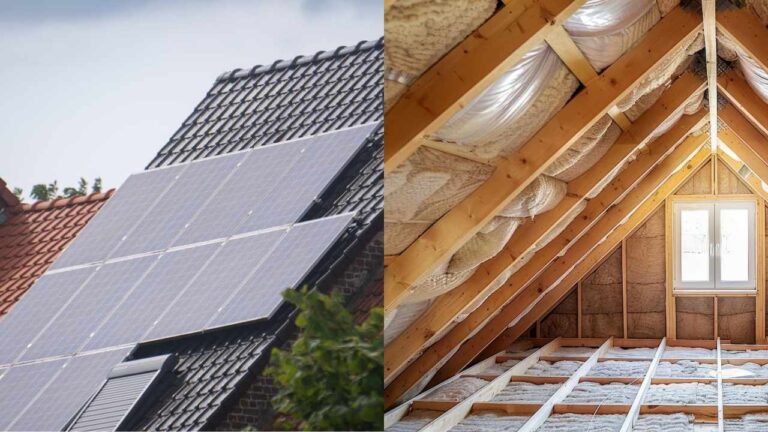If your goal is to reduce home energy bills and consumption, insulation often delivers more immediate and cost-effective energy savings than solar panels.
Studies show that proper insulation can cut heating and cooling costs by up to 40%, depending on the climate and existing home condition, while solar panels generate electricity but don’t reduce consumption.
According to the U.S. Department of Energy, space heating and cooling account for over 50% of home energy use. Improving insulation addresses that directly. Meanwhile, solar panels only help after the energy has already been used.
For most homeowners, the smartest strategy is to prioritize insulation first, especially if your attic, walls, or floors are under-insulated. Once your home is energy efficient, solar panels become more effective and financially worthwhile. In short, Insulation reduces waste.
Solar panels offset it. Together, they’re powerful – but if you must choose one first, insulation usually saves more energy per dollar spent.
What Each System Does
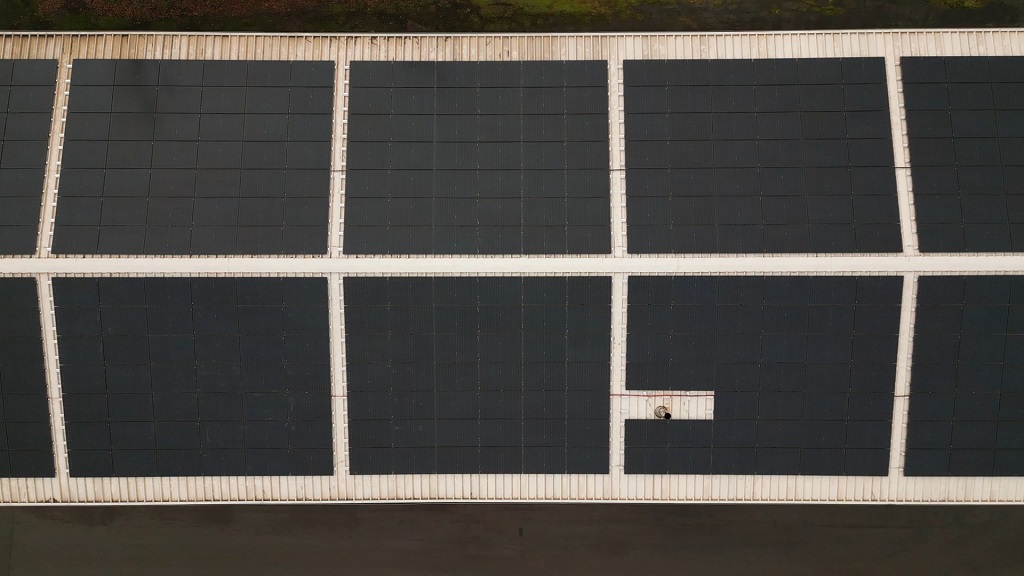
Insulation and solar panels address energy use from opposite ends of the spectrum. Insulation focuses on reducing energy demand by limiting heat transfer between indoors and outdoors.
It keeps your home warmer in the winter and cooler in the summer, which directly reduces how much your HVAC system has to run. This reduces both natural gas and electricity use, depending on your heating source.
In contrast, solar panels work by producing clean electricity that powers your appliances and systems. They don’t affect how much energy your home consumes – they only change where that energy comes from.
This means if your home is inefficient – drafty windows, poor insulation, air leaks – solar panels won’t stop the waste. They’ll just power that waste with sunlight instead of grid electricity.
Compare the Energy Savings Potential
When measuring raw energy saved, insulation usually comes out ahead.
A well-insulated attic can reduce total energy usage by 10–20%, and full envelope improvements (attic, walls, basement) can cut 30–50% of heating and cooling loads, depending on location and building age.
Solar panels, by contrast, can generate between 70–100% of your household’s electrical usage if properly sized – but again, this is generation, not reduction.
You still use the same amount of energy unless you pair solar with other upgrades like LED lighting or efficient appliances.
| Energy Upgrade | Typical Savings (Annual) | Payback Period | Affects the Electric Bill | Affects Heating/Fuel Bill |
| Attic Insulation | 10–20% | 2–4 years | Yes | Yes |
| Wall Insulation | 10–30% | 3–6 years | Yes | Yes |
| Solar Panels (6 kW) | 70–100% generation | 8–12 years | Yes | No |
Look at Climate and Heating Type
Climate plays a major role in determining which upgrade saves you more energy. In cold climates like the Upper Midwest or Northeast U.S., where heating dominates energy bills, insulation can slash fuel or electricity use by thousands of kilowatt-hours annually.
If your heating system runs on natural gas, propane, or heating oil, solar panels won’t offset that usage, but insulation will.
In hotter climates, such as Arizona or Florida, insulation also plays a huge role in blocking solar heat gain and keeping cooling bills in check. Even in these areas, radiant barrier insulation and attic sealing can reduce cooling load by 15–25%.
Solar panels tend to perform better in sunny, southern regions, but their effectiveness still depends on roof direction, shading, and net metering policy. In all regions, maximizing insulation first enhances solar effectiveness by lowering the size of the system you need, reducing both cost and environmental impact.
And for homes that use electric heating systems – like Hamilton heat pumps or ductless mini-splits – adding insulation helps them work more efficiently, reducing both energy consumption and wear on the system.
Understand Cost vs. ROI
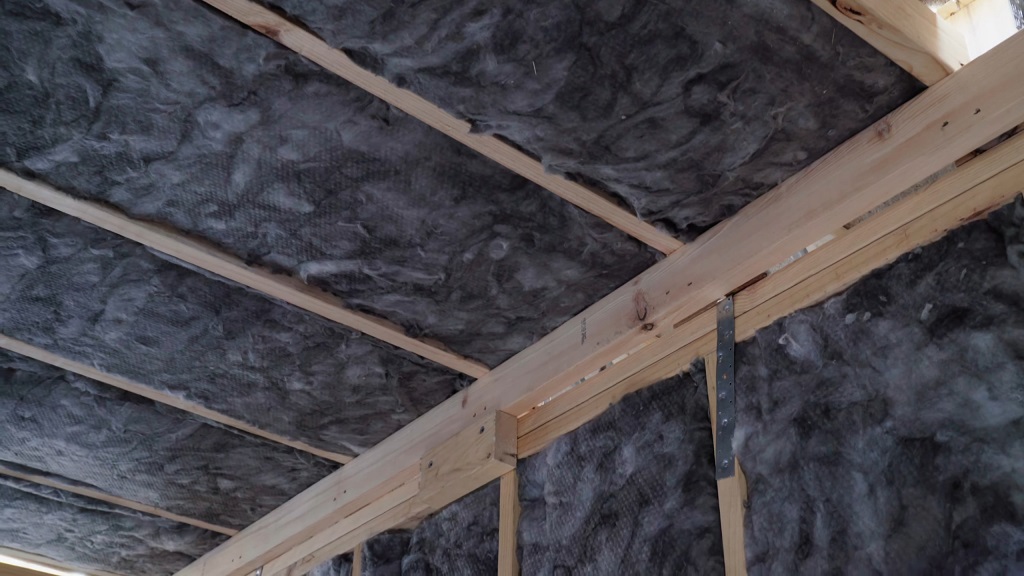
Cost and return on investment are where insulation truly outperforms solar, especially in older homes. According to the EPA’s ENERGY STAR program, air sealing and adding insulation to an uninsulated attic typically costs $1,500–$3,500, with a payback period as short as 2 years in cold climates.
Wall insulation runs higher – up to $4,000–$8,00,0, depending on home size – but still pays back in under 6 years in most cases.
By comparison, a residential solar system costs $15,000–$25,000 before incentives, with payback periods ranging from 8 to 15 years depending on utility rates, tax credits, and usage patterns.
Solar’s ROI improves if electricity rates are high and local incentives are strong, but it rarely beats the dollar-for-dollar energy savings that come from insulating an inefficient home.
| Upgrade | Average Cost | Energy Savings Value (10 yrs) | Typical ROI Timeline |
| Attic Insulation | $2,500 | $4,000–$6,500 | 2–4 years |
| Wall Insulation | $6,000 | $8,000–$10,000 | 4–6 years |
| 6 kW Solar System | $18,000 | $12,000–$20,000 | 8–12 years |
Consider Carbon Impact and Energy Source
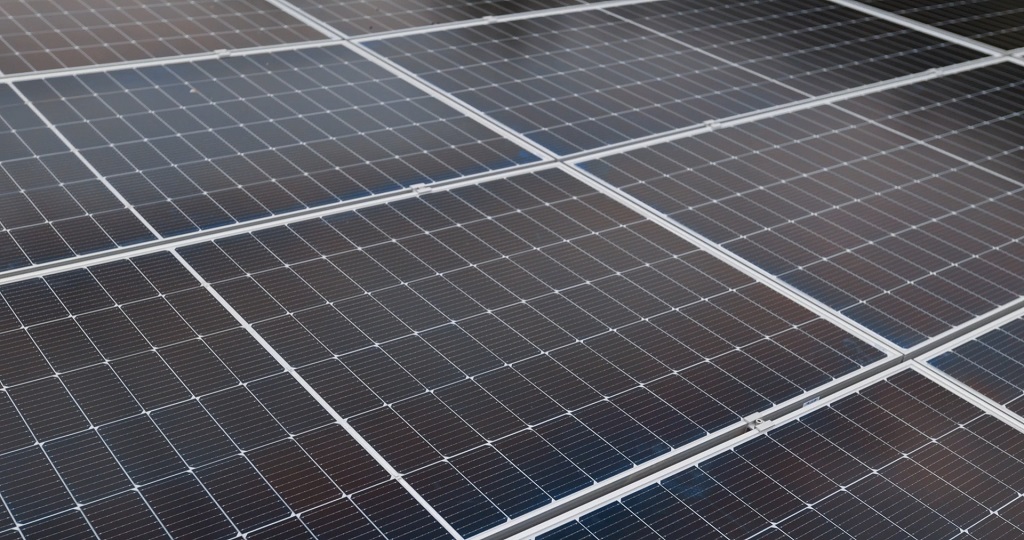
From an environmental perspective, both upgrades contribute to reducing your carbon footprint, but in different ways. Insulation reduces demand, which means less fuel is burned to heat and cool your home.
According to the Oak Ridge National Laboratory, insulation upgrades can reduce annual CO₂ emissions by 1,000–3,000 pounds per household, depending on region and fuel source.
Solar panels generate clean power, helping displace emissions from coal, gas, or other fossil-fuel-powered grid sources. Over 25 years, a typical 6 kW solar system can offset 100,000+ pounds of CO₂ emissions.
But here’s the nuance: solar panels don’t reduce demand – they simply shift it. If your home leaks air, has poor ductwork, or uninsulated walls, you’ll still be consuming energy at a high rate.
Combining Both for Maximum Savings
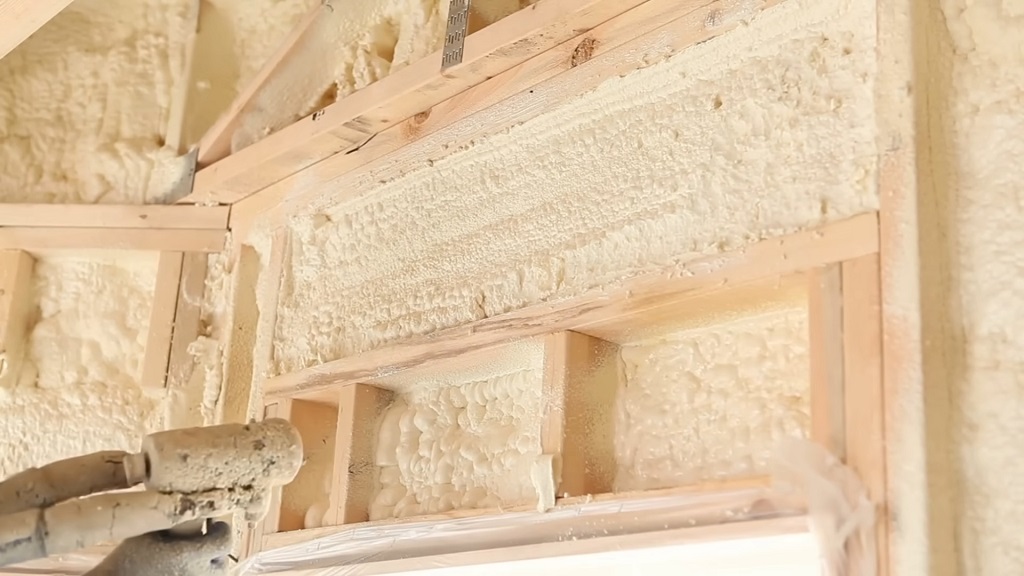
For the biggest long-term savings and sustainability gains, combining insulation with solar panels is ideal. When you insulate first, your home’s overall energy needs shrink, meaning your solar system can be smaller and cheaper, yet still cover 100% of your usage.
This layered approach reduces your energy bills, emissions, and your reliance on any single energy source.
Many states now offer bundled energy efficiency + solar incentives, recognizing that insulation makes solar more effective. For example, some utility programs require a home energy audit and insulation upgrades before solar rebates are unlocked.
If budget is a concern, start with air sealing, attic insulation, and window caulking – these upgrades deliver huge gains for little investment.
Then, when ready, install a right-sized solar system that matches your reduced energy load. That’s the path to true energy independence and environmental responsibility.
Conclusion
Insulation saves more energy, more quickly, and at a lower cost than solar panels, especially in older or under-insulated homes. It addresses energy waste at the source, while solar offsets electricity after it’s already used.
If your budget only allows for one upgrade, start with insulation. It immediately reduces heating and cooling demands, slashes energy bills, and makes your home more comfortable.
Once your home is efficient, solar panels become a smarter and more affordable investment. Together, they’re a powerful combination.
But in the battle of insulation vs solar panels, insulation is the foundational step that delivers the highest savings per dollar and the fastest return on investment.

